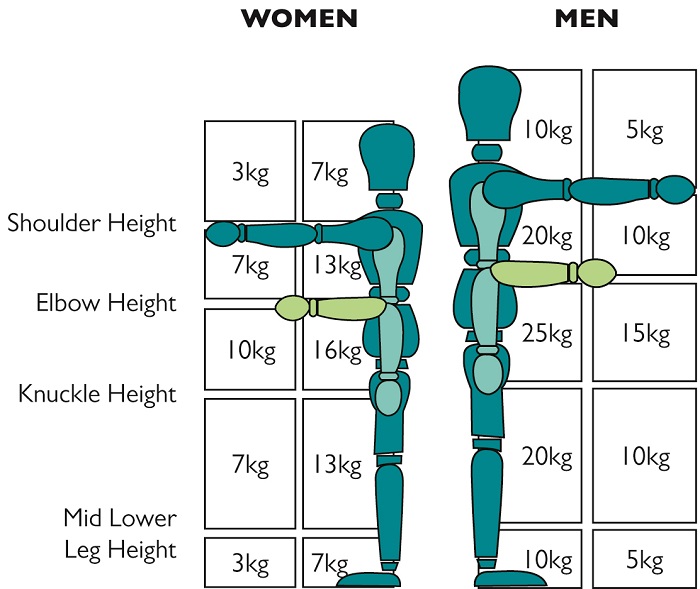How can I evaluate what I can and cannot lift?
Because everybody has different strengths, weaknesses and abilities there is no legal maximum weight to lift at work just guidance. It is a matter of judgement in each case with a wide varierty of different elements to consider e.g. the task itself, individual ability, the load itself, equipment availabe and the environment around you.
Risk assessments should have been completed for the lifting of certain objects and it is important that you follow the guidance detailed in these, for example it may state that the task must be completed by two individuals.
If you have any underlying or new health conditions, or are pregnant it is important to make your manager aware, so they can assess with you whether you can or cannot complete a lifting task.
There is no such thing as a completely ‘safe’ manual handling operation. The following diagram provides guidance as to what is safe to lift and is very often used in risk assessments to make a realistic evaluation.

Each box contains a guideline weight for lifting and lowering a weight in that zone. The weight is reduced in the zone if the handling is done with arms extended, or at high or low levels as this is when injuries are most likely to happen.
Decide which box or boxes in the diagram your hands pass through when moving the load, then assess the maximum weight being handled. If it is less than the figure given in the box, the operation is within the guidelines, but make sure that this is within your own capability.
The guideline weights assume that the load is readily grasped with both hands and that the operation takes place in reasonable working conditions, with the lifter in a stable body position. Reduce the guideline weights if you must twist during the operation, reduce by 10% if you twist beyond 45 degrees and by 20% if you twist beyond 90 degrees.
These guidelines are for infrequent operations, if carrying out repetitive tasks this will require a more in depth assessment.
